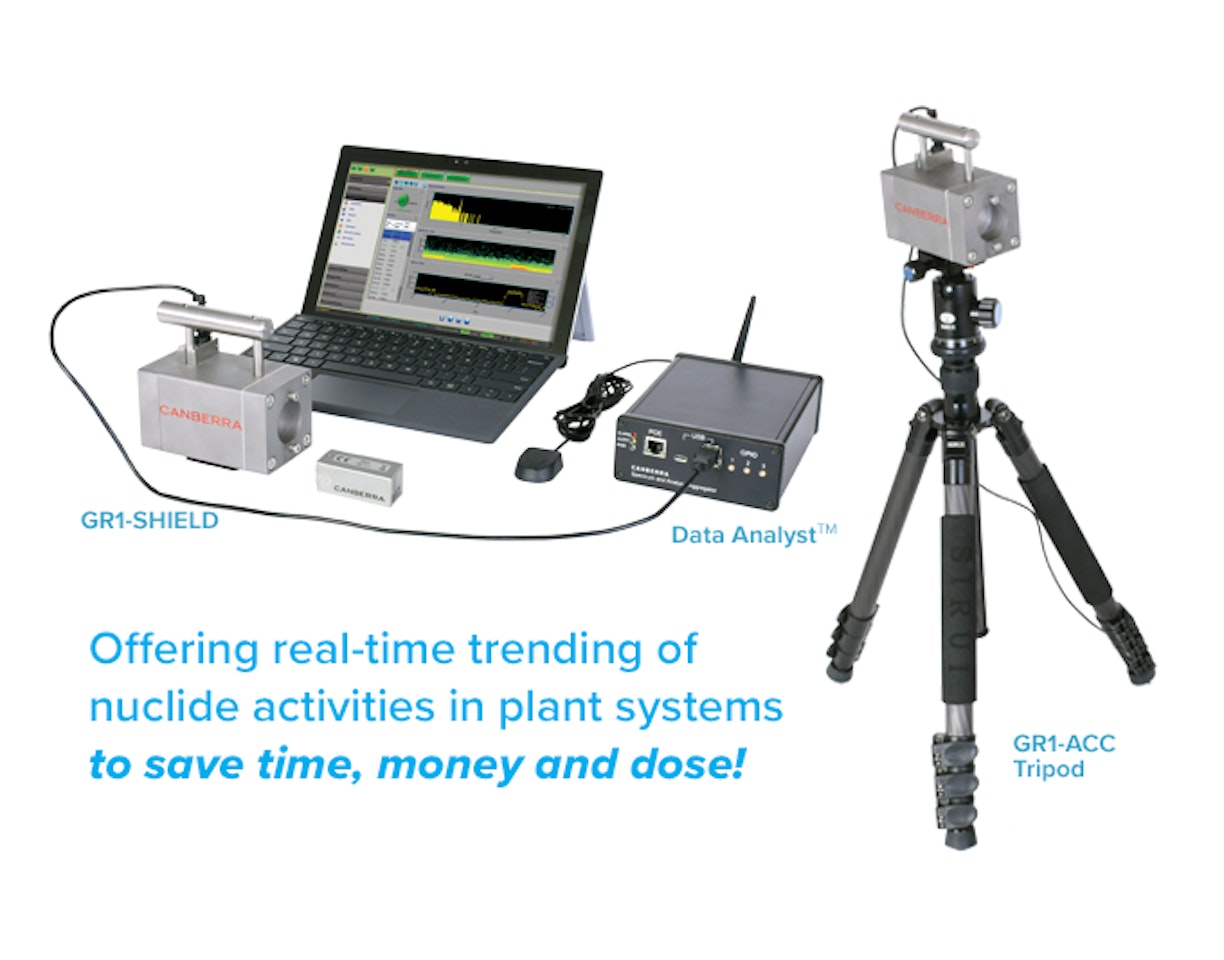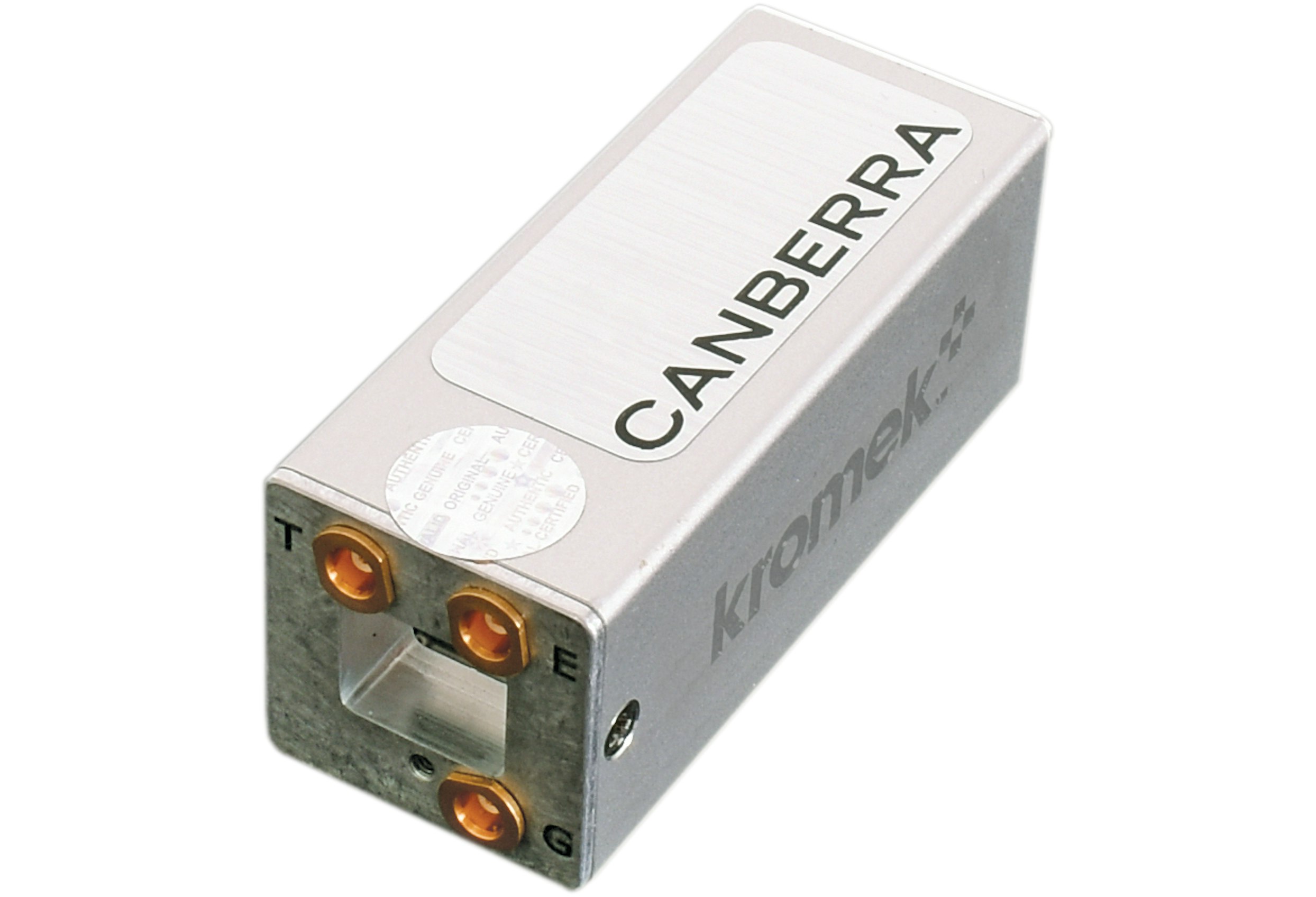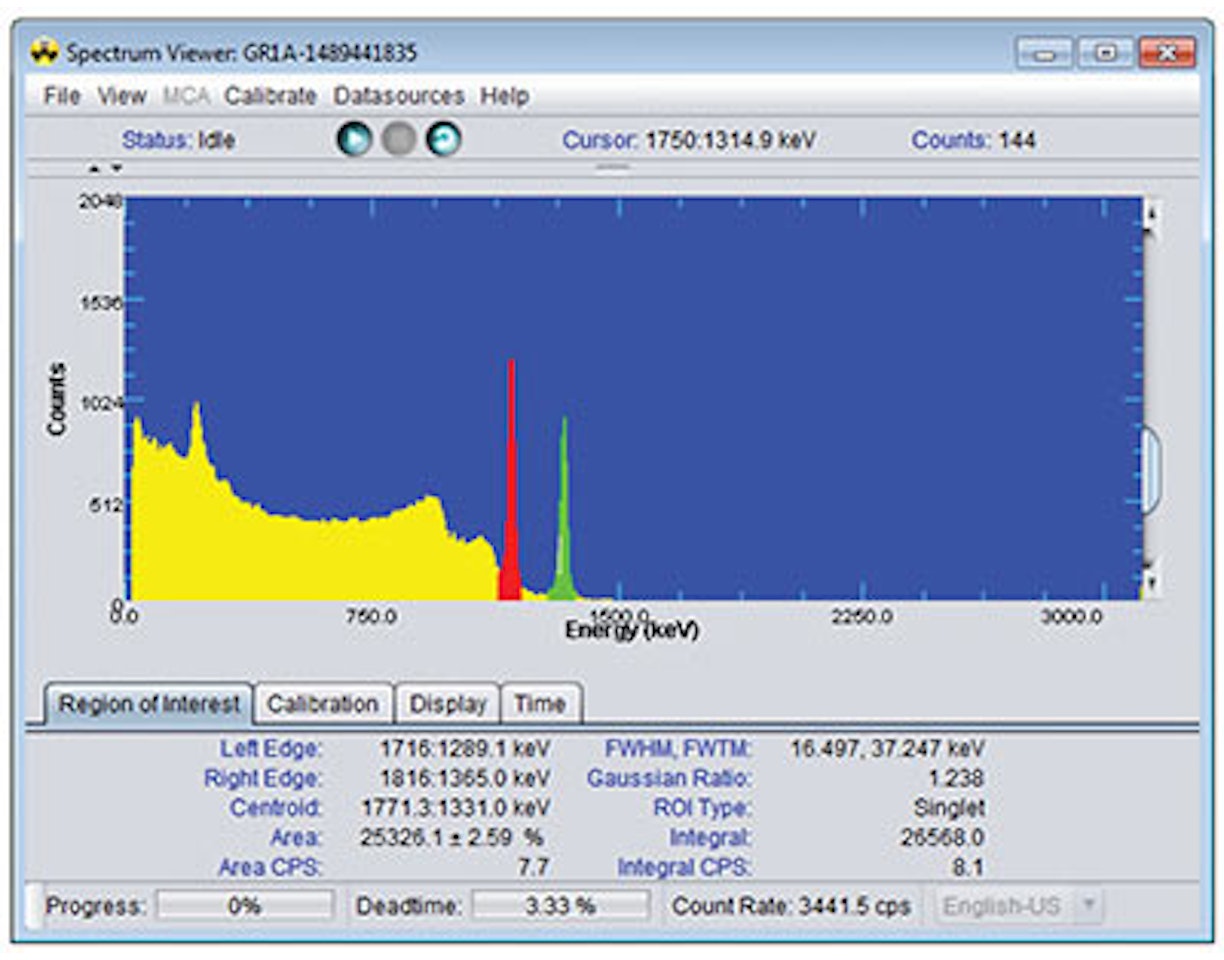Description
The GR1 family offers high performance gamma spectroscopy in a compact, fully-integrated package. Designed for both laboratory and field use, this unit contains a preamplifier, shaping amplifier, baseline restorer, HV supply and MCA. The advanced signal electronics requires no cooling and provides ready access to spectroscopy data over the mini-USB port. The power consumption is less than 250 mW, so no external power is required. This makes the GR1 unit ideal for many portable spectroscopy applications where size, weight and power constraints are very important.
The 1 cm3 CZT detector provides gamma spectra with significantly improved FWHM resolution as compared to NaI scintillators. This greatly improves the identification capability for many important isotopes (such as Thorium and Radium daughters in the background) with closely spaced gamma lines.
The GR1 family includes four models, each with a 1 cm3 CZT solid state detector. The GR1 and GR1+™ units are provided in a clean rectangular package, with no external signal connectors (only the mini USB connector). The “+” designation provides an option for a higher performance detector (better FWHM resolution; see chart for details). The GR1-A™ and GR1-A+™ units are provided in the same rectangular package as the GR1 unit, except that three MCX connectors are provided to allow access to the energy and timing signals as well as an input gate. These signals allow the units to be tailored for specific applications in nuclear research and academia.




